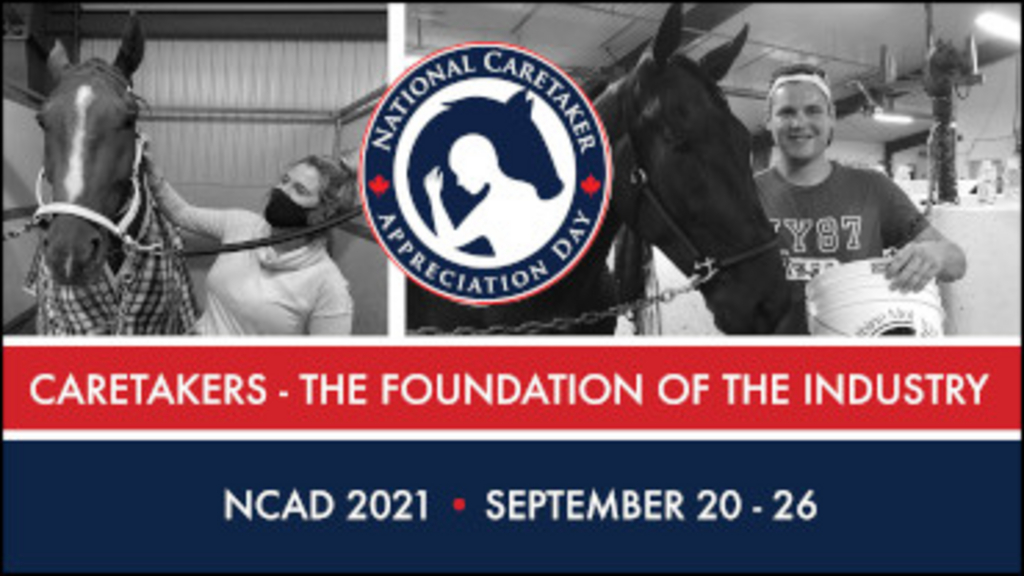
It should come as no surprise that the horsemen and women who care for our equine athletes are 100 percent dedicated to their work and the animals in their care.
In honour of National Caretaker Appreciation Day Century Downs would like to give a shout out to all of the caretakers at the track and shared just a few of their thoughts about the animals they care for and the work they love.
Here is a behind-the-scenes look with Shanisty Andres, (from the Dave Kelly barn); Thalia Martin, (from the Nathan Sobey team); Chris Phillips, (from the Joe Ratchford barn) and Logan Archibald (from the Tyler Redwood crew).
How did you get started in the industry?
Andres: I responded to a Kijiji ad, that the Hainings’ had posted, and I had always wanted to work with horses but had never had the opportunity.
Martin: An ex-boyfriend, he got me started working with thoroughbreds in B.C. and I got laid off. I came to Calgary for a new job and then was laid off. I was driving around trying to find work and I came across a Standardbred barn which was owned by Ken Dorman and Grant Hollingsworth. And that was 23 years ago.
Phillips: My mom was involved in horses. She worked as the Race Secretary at Rideau Carleton Raceway back in the early 60’s.
Archibald: I moved out here from Nova Scotia and got a job with a guy I went to college with, Dave Kelly. At the time I knew absolutely nothing about racehorses and that was about five years ago.
What do you love most about what you do?
Andres: I love working with horses; what people say about them being good for the soul – rings true! They are always making me smile.
Martin: Everything! From the looks on their faces first thing in the morning while they all wait to get fed to watching babies grow up and win races, seeing all of their hard work pay off is truly gratifying.
Phillips: The best part about what I do is being able to sit behind them on the track while they jog; that’s what I love about it all.
Archibald: All of it! The fact I work with them all week, getting to watch them race and seeing them do good or finding out what you can improve on for next week.
Can you describe what an average day looks like for you?
Andres: An average usually consists of me coming in, feeding them breakfast, getting them harnessed and exercised, bathing them after races and putting on bandages – if they need them.
Martin: An average day is usually busy! We start at 6:30-7:00 a.m. and work until about 3:00-3:30 p.m. I clean feed them, clean the stalls, get them ready for exercise, put bandages on if they need them, put them away and then it’s time for lunch. The afternoon usually consists of sweeping and anything else that needs to be done. They are super long days, but they have their rewards.
Phillips: An average day, I get up at 5:00 a.m. I feed them, clean stalls, take them jogging, put them away, then it is lunch, we get a small break and then dinner. And then I do it all over again the next day!
Archibald: Do it! If you like horses and like to work, it can be a lot of work but if you want to do it, go for it.
This is the fourth year that Standardbred Canada (SC) has facilitated events across the country. Showing appreciation for the caretakers keeping our horses healthy and safe while training and racing under unusual circumstances and protocols during the pandemic is important, and SC would like to thank the many racetracks, associations, owners, trainers, breeders, drivers, volunteers and stakeholders that are all taking part to make this happen.
(with files from Century Downs)

